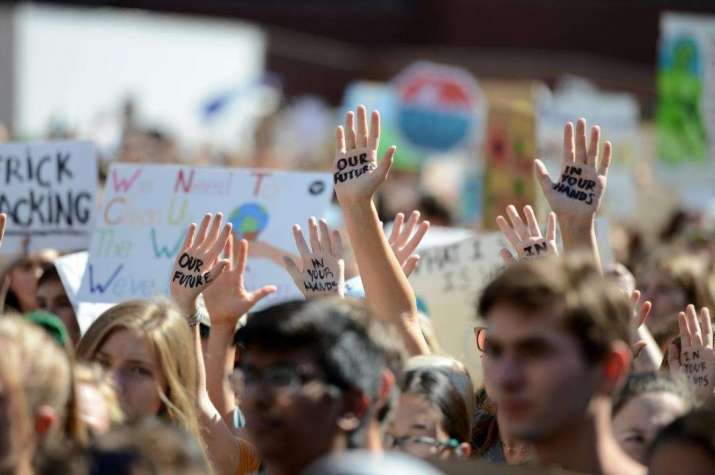
Gathering Peaceably yet Firmly
Satyagraha means “holding firmly to truth,” a term coined by Mahatma Gandhi in his work in both South Africa and India for human rights.** Great resistance leaders such as Rigoberta Menchú Tum, Martin Luther King, Jr., Gandhi, Leymah Roberta Gbowee, Rosa Parks, and Cesar Chavez are just a few prominent examples of nonviolent protest leaders who brought about invaluable change through their willingness to resist discrimination and stand up for human rights. Although each of these leaders (and countless others), have stood for different causes and through all kinds of oppression, institutional violence, and racism, what binds them together is their core ethos of nonviolent and active civil resistance.
On September 20th, students and concerned citizens in a multitude of different countries walked out on school and work, in order to gather peaceably yet firmly to show their solidarity in the struggle for climate justice and for political renewal. This is a dire time, as human-produced climate change threatens the trajectory of our very existence. I participated as a supporter and photographer in the climate rally led by students in San Rafael, California. Although this was a modest-sized gathering, the students remained all throughout the morning and afternoon, missing school in order to stand up for their very future. Gathering peaceably is a long-standing tradition. For children today, who are greatly concerned about the future of the overall environment, specific ecosystems, animal species, and human beings, these rallies and marches are truly an authentic schooling in the streets.
I have been reading that since Greta Thunberg gave her impassioned speech at the recent UN Climate Council, that there is all kinds of backlash and criticism, and even trolling and bias against her both for her gender and for her being a person with autism. It is nothing new for women, minorities, differently-gendered people, and those of color to experience both subtle and brutally blatant bias, violence, and discrimination. Greta is just one among many heroes who will incur criticism because she is fearless, and goes against the norm of the “good, quiet girl.”
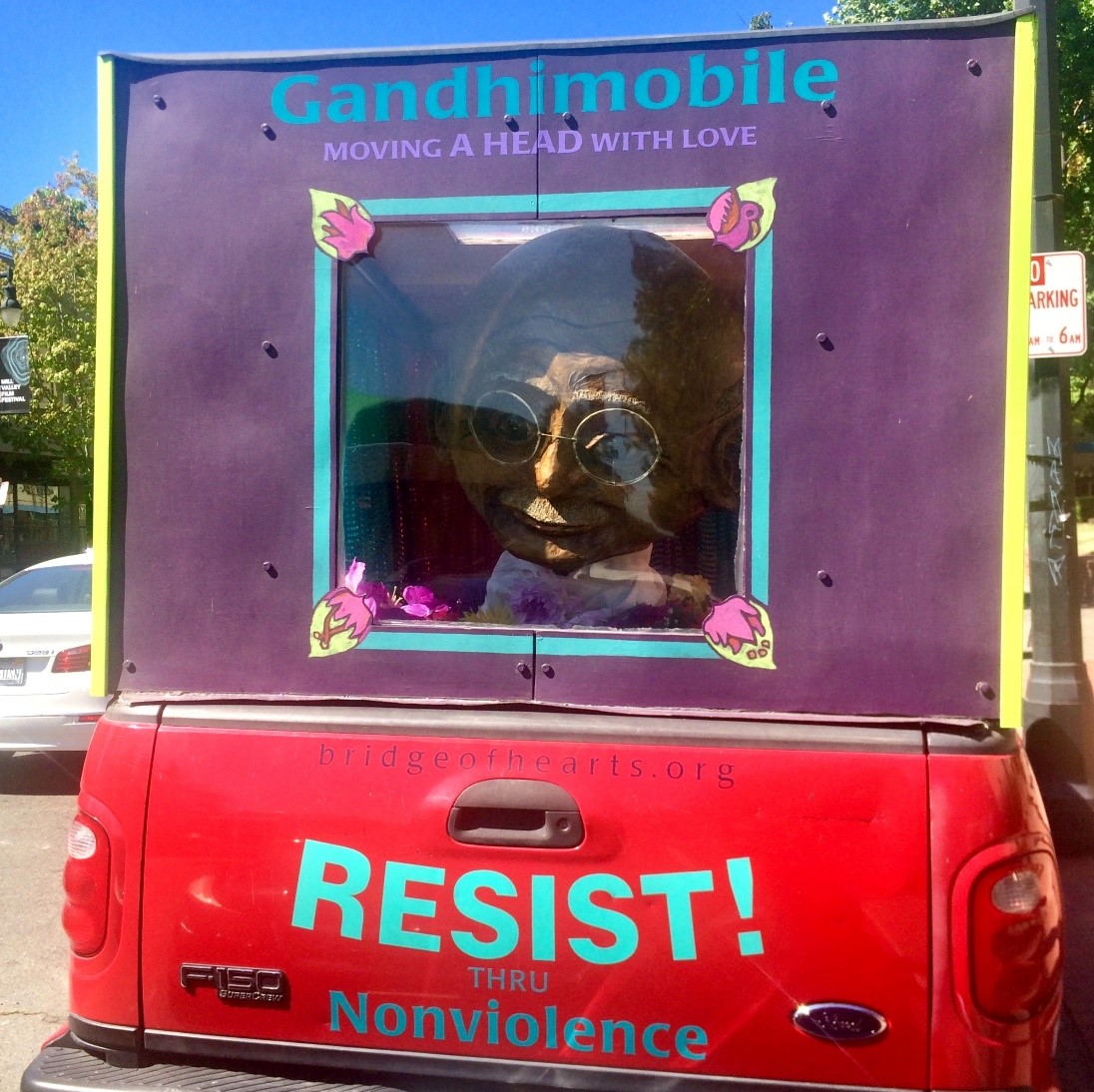
Non-violent Communication & Messaging
The essence of nonviolent, peaceable civil resistance is holding fast to the tenets of not returning violence with violence, whether it be physical verbal for mental. This philosophy has deep roots in Buddhism and the commonality, whether intentional or otherwise, draws together local groups who may feel they are working in isolation, yes have philosophical kin around the world. A core tenet and vow of Buddhism is to not return a hateful word in kind, nor a blow, nor a theft, nor any harm whatsoever, but rather to foster genuine compassion for the perpetrator, who is only increasing their negative karma through their actions and speech.
It has long been known that colonial intrusion has led to extinction or mass reduction in the previously untouched populations of isolated, indigenous communities around the world due to disease, warfare, and political domination. One silver lining however, is that in this day and age, for example in parts of the Amazon, those indigenous communities who have already been influenced by the outside world have access to social media. Ironically, the internet and other technologies can help further their own causes to resist, persist, and thrive, gaining advocates among the mainstream population in support. This was seen most dramatically in recent months in the Amazon in Brazil, where indigenous leaders have gone to state capitols to march and rally in support and protection of their forests and farmlands, in protest of corporate domination and indeed genocide, through one method or another.
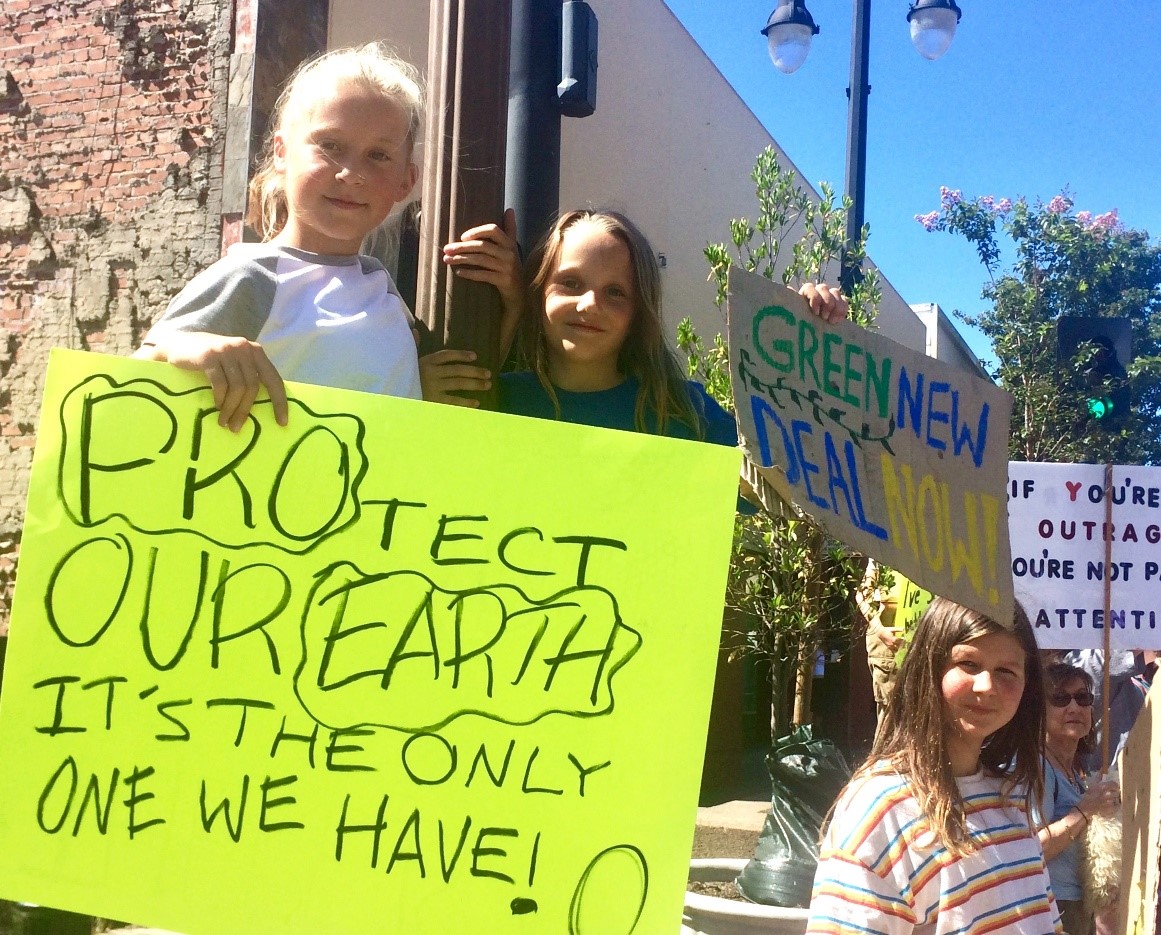
Women & Children at the Forefront
As I wrote in my previous article on climate justice, it is quite often women and children, especially the indigenous, who are at the forefront of this nonviolent resistance and uprising to protect their cultures, the animals with whom they are interdependent, and shared habitats. I have often wondered and thought deeply about why this is so.
In researching my recent book, Kindness for All Creatures, I came across a great many groups in Africa comprised of trained, armed all-female groups of antipoaching units, who protect with fierce love the species with whom they cohabitate. It has been shown through studies that the women make better anti-poaching protection groups for the wild animals than men do. Why is this so? I believe in my heart it is because, for the most part, women have never lost their connection with the earth itself. Women give birth and bring forth life from their very bodies, thus experiencing their own human body as not separate from the body of the earth, and from the continuation of the human species.
Therefore, it is not a stretch for women to realize inwardly a deep, intuitive connection not only to the earth and ecosystems and habitats, but to all creatures on earth. It is as if women feel they are the mothers of all, not unlike Tara herself or Prajnaparamita. Likely these indigenous women have ancestral roots in spiritual traditions that connect them ritually to the seasons, the climate, the elements, animals, human beings, and the spirit world, coexisting in relationship.
Children, at least before they may become more jaded in adolescence, (which may be more of a Western problem), are also quite connected to the earth, the land, the animals, and to their mother’s body, connecting them to feel “earthed” rather than separate from their environment. In this modern age the world over, children are modestly or highly educated about cultures and sciences, and are able to connect the dots between the urgency of what is happening with our climate and what it means for their future and very survival.
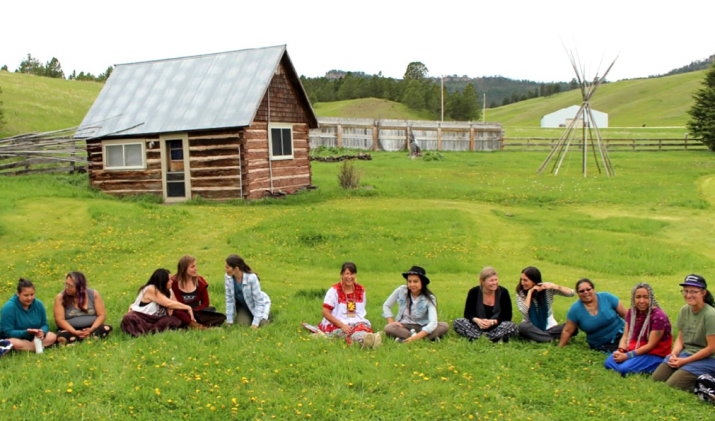
Humor, Love, & Inclusivity
What I deeply appreciate about contemporary, nonviolent, civil resistance is the continuity of this deep commitment to being truly nonviolent which has humor, love, and inclusivity as core elements. Just as corporations and modern industrialized societies are plundering the earth, its peoples and animal species have also been very suppressed. Inclusivity, not only of all species but of all kinds of people from different cultures and walks of life, is an essential aspect of nonviolent civil resistance. We cannot move forward toward true justice without compassion for all peoples and species, no matter if we understand another culture or not. (And indeed, animal species have their cultures too.)
Local Actions, Global Unity
Although it feels like the climate change situation is quite dire, I am inspired and uplifted by the multitude of different groups and individuals taking sustained, local action and reaching out across national lines to unite across borders. We really don’t have any other choice, but as political and environmental situations intensify, not only in literal but figurative temperature, the tendency may be for the base human nature to resort to violence. People with less understanding or willingness to accept scientific reality may feel a kind of anger born of ignorance. They know they cannot control the situation, yet do not know which way to turn in their own minds to metabolize all the information and find constructive ways to engage. The tendency for racism, misogyny, and unscientific thinking can only be counteracted with information, intelligence, soundly-based research, and its delivery in a nonviolent manner.
In lieu of timely, appropriate, research-based responses actions by our own governments at present, individuals and some green-minded corporations, as well as small community groups are coming together to brainstorm and take action at even the neighborhood level. Not one of these modest gatherings or impulses is insignificant, for taken together across county, state, national, and global lines, engaged and compassionate human beings are joining forces to benefit all. Together we face head-on the issue of how politics and behaviors must change to support all species and habitats to survive and thrive into the future, most especially for the benefit of all the world’s animals and children.
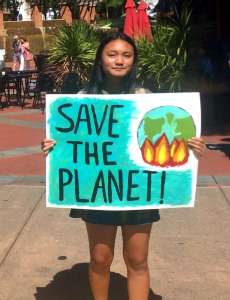

See more
The Women of Standing Rock Are Building Sovereign Economies (Truthout)
Young People Lead Millions To Protest Global Inaction On Climate Change (NPR)












